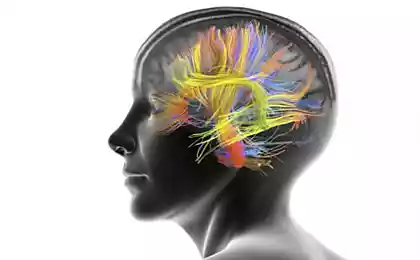157
What to change in yourself so that money pours into the house
The older we get, the more often we ask, “Who am I?” Do I know myself well? Do people around me know me better? Answering them will help. The Johari Window Personal Development Model.
This is an unusual tool that you can use. better understand yourself and improve. We have been enjoying sharing psychological information with you lately. Therefore, we hope that you will like this topic!

Johari window The Johari Window Concept More than 50 years ago, the American psychologists Joseph Laft and Harry Ingham developed. The model looks very simple, but that’s what its genius is. In fact, it is a small tablet (matrix), which consists of several zones.

It has two vertical axes: “I know,” “I do not know.” There are two horizontal axes: “Others see” and “Others do not see.” These axes cross, forming 4 zones of human personality.
The first open area includes all of our Characteristics and traits that are well known to us. We like them and we openly show them. For example, you are a funny and witty person. Therefore, on occasion, you will not miss an opportunity to tell a joke and cheer your friends.

Usually in the open zone are those qualities that you love and appreciate yourself. It's positivehighly valued in society. Manifesting them, on a subconscious level, people understand that in this way they will be able to please others.
In the second hidden zone are features that we know about. We don't want them to be known. others. Therefore, as a rule, people try to suppress or hide not the best of their qualities. For example, you know you're hot-tempered. And you very often restrain yourself so as not to fail.

What's interesting is that The boundary between the first and second zones is unstable and depends on the context.. In other words, with close people, a person can behave more relaxed and show more, albeit not the most positive qualities. For example, being soft and too shy. And with new acquaintances, we behave more constrained, showing only our best sides.
The next area of our personality is called the “blind spot”. And this is where it's more interesting. This includes our traits and habits, of which we are not even aware. But other people see it from the outside. To understand what is in the blind spot, you need feedback with an open area.

What does that mean? First, it's worth it. Pay more attention to other people’s reactions about your actions. If you notice that you are doing something wrong, don’t be afraid to ask what the problem is. Second, treat yourself more carefully and analyze how you behave. By the way, in the hidden zone and blind spot may be our resources and talents, which we may not notice. Or we are simply afraid to show them.
Zone unknown Perhaps the most interesting part of this psychological model. It includes qualities and traits of our character about which we know absolutely nothing. They are also unknown to the people around us. It is said that there is human potential in this area.
What Johari Window gives This model provides an opportunity for self-development. Based on the scheme, you can develop in 3 different ways. The first is that Carefully display your qualities from the hidden zone. These are traits you used to hide from others or fear to show. As a result, you will notice that you are changing for the better.

The second way is to ensure that Pay more attention to other people’s feedback. Listen to the words of others, ask questions and accept constructive criticism in your address. This will help you get rid of those qualities that you do not like.
The third way involves Use of specific psychological tools. For example, the model of unconscious motivation, which is also called the Enneagram. You will find out more about what it is by following this link.

Well, we hope Johari Window helps you. unlock your potential And get rid of all the unloved qualities. Remember that self-development has no expiration date. No matter how old you are, you can always explore the depths of your character and open up more and more opportunities. Good luck!
This is an unusual tool that you can use. better understand yourself and improve. We have been enjoying sharing psychological information with you lately. Therefore, we hope that you will like this topic!

Johari window The Johari Window Concept More than 50 years ago, the American psychologists Joseph Laft and Harry Ingham developed. The model looks very simple, but that’s what its genius is. In fact, it is a small tablet (matrix), which consists of several zones.

It has two vertical axes: “I know,” “I do not know.” There are two horizontal axes: “Others see” and “Others do not see.” These axes cross, forming 4 zones of human personality.
The first open area includes all of our Characteristics and traits that are well known to us. We like them and we openly show them. For example, you are a funny and witty person. Therefore, on occasion, you will not miss an opportunity to tell a joke and cheer your friends.

Usually in the open zone are those qualities that you love and appreciate yourself. It's positivehighly valued in society. Manifesting them, on a subconscious level, people understand that in this way they will be able to please others.
In the second hidden zone are features that we know about. We don't want them to be known. others. Therefore, as a rule, people try to suppress or hide not the best of their qualities. For example, you know you're hot-tempered. And you very often restrain yourself so as not to fail.

What's interesting is that The boundary between the first and second zones is unstable and depends on the context.. In other words, with close people, a person can behave more relaxed and show more, albeit not the most positive qualities. For example, being soft and too shy. And with new acquaintances, we behave more constrained, showing only our best sides.
The next area of our personality is called the “blind spot”. And this is where it's more interesting. This includes our traits and habits, of which we are not even aware. But other people see it from the outside. To understand what is in the blind spot, you need feedback with an open area.

What does that mean? First, it's worth it. Pay more attention to other people’s reactions about your actions. If you notice that you are doing something wrong, don’t be afraid to ask what the problem is. Second, treat yourself more carefully and analyze how you behave. By the way, in the hidden zone and blind spot may be our resources and talents, which we may not notice. Or we are simply afraid to show them.
Zone unknown Perhaps the most interesting part of this psychological model. It includes qualities and traits of our character about which we know absolutely nothing. They are also unknown to the people around us. It is said that there is human potential in this area.
What Johari Window gives This model provides an opportunity for self-development. Based on the scheme, you can develop in 3 different ways. The first is that Carefully display your qualities from the hidden zone. These are traits you used to hide from others or fear to show. As a result, you will notice that you are changing for the better.

The second way is to ensure that Pay more attention to other people’s feedback. Listen to the words of others, ask questions and accept constructive criticism in your address. This will help you get rid of those qualities that you do not like.
The third way involves Use of specific psychological tools. For example, the model of unconscious motivation, which is also called the Enneagram. You will find out more about what it is by following this link.

Well, we hope Johari Window helps you. unlock your potential And get rid of all the unloved qualities. Remember that self-development has no expiration date. No matter how old you are, you can always explore the depths of your character and open up more and more opportunities. Good luck!
When the pandemic will end and how to trust the world in a time of anxiety
Why modern teachers do not want to teach children and shift responsibility to parents























